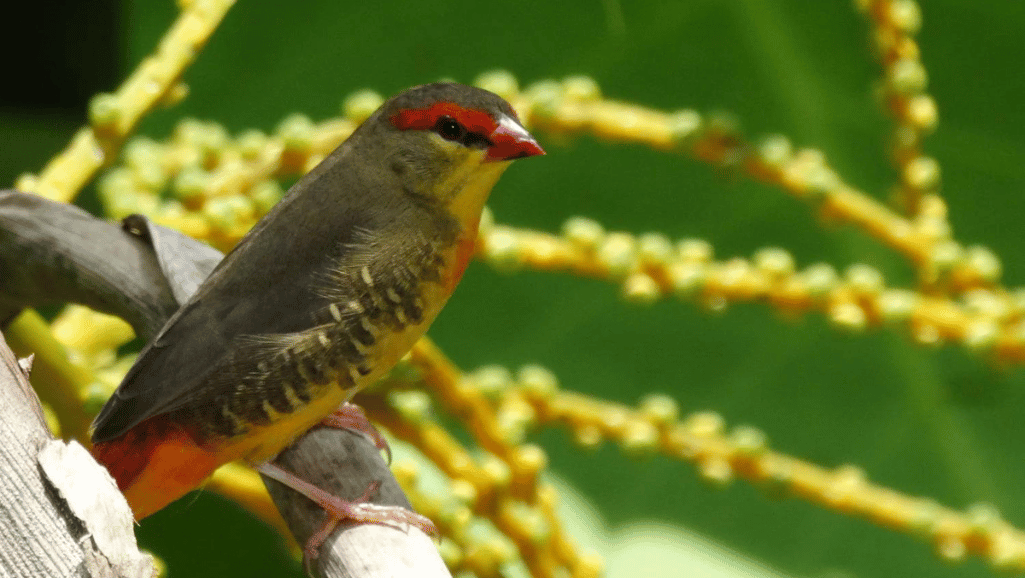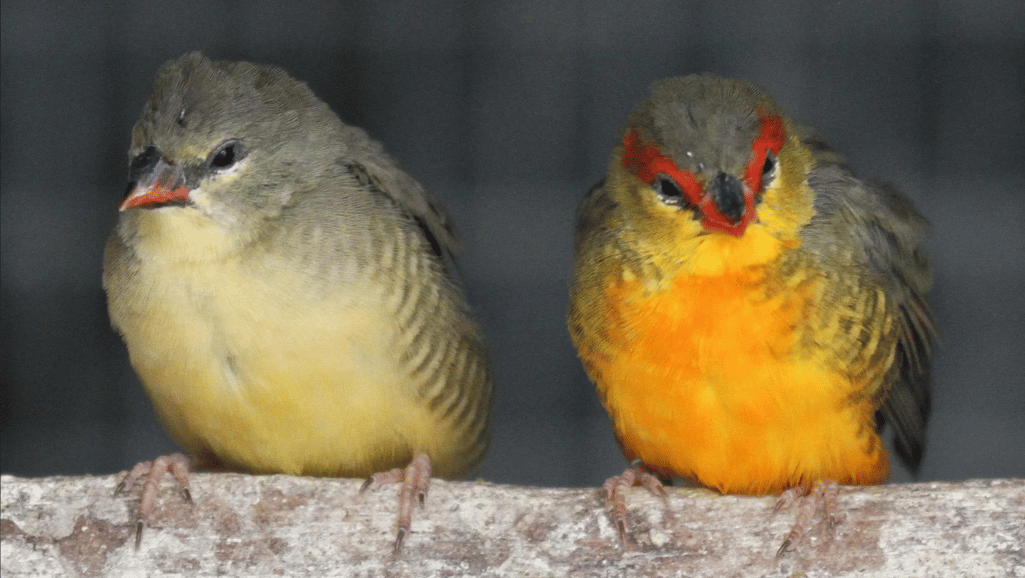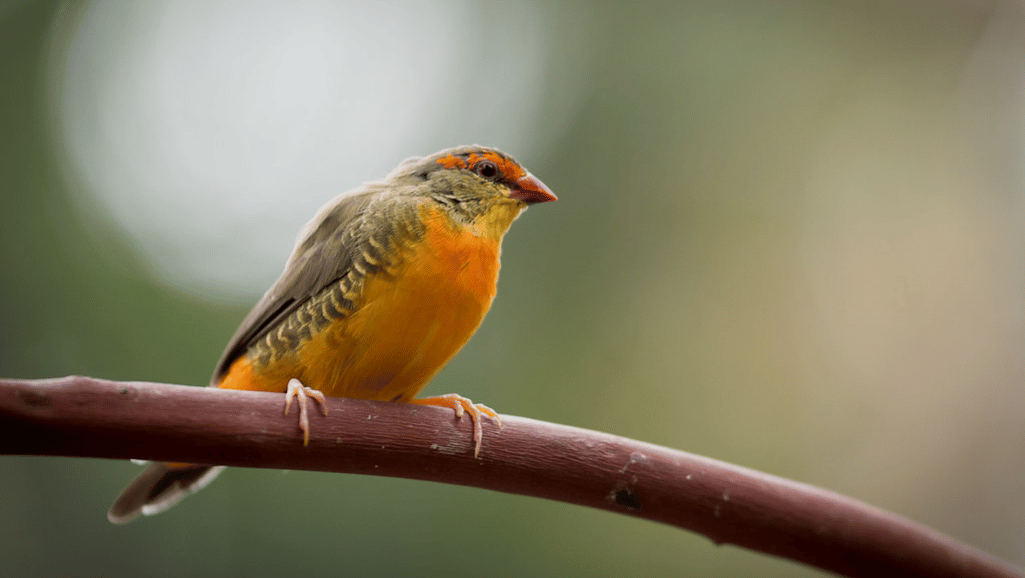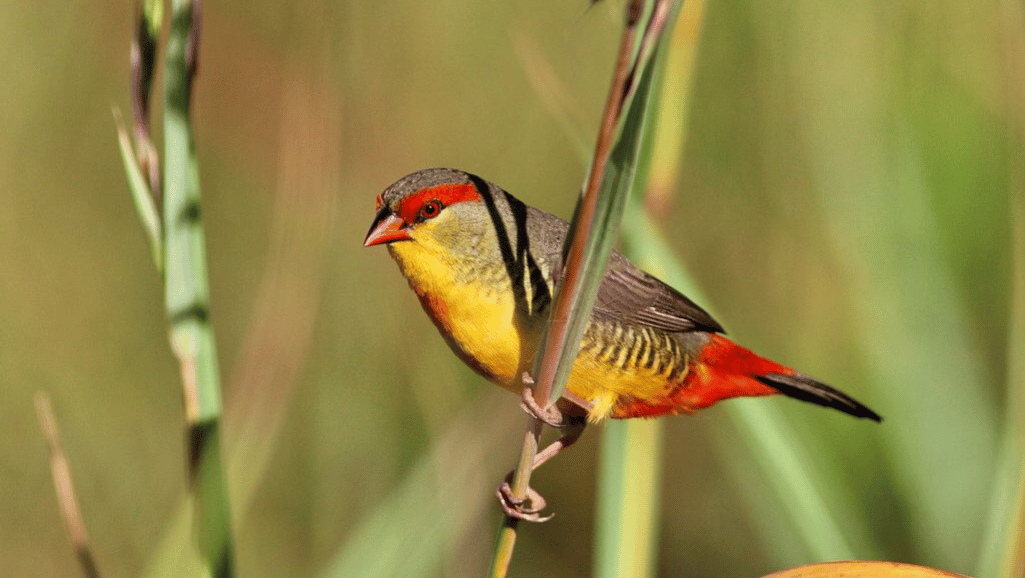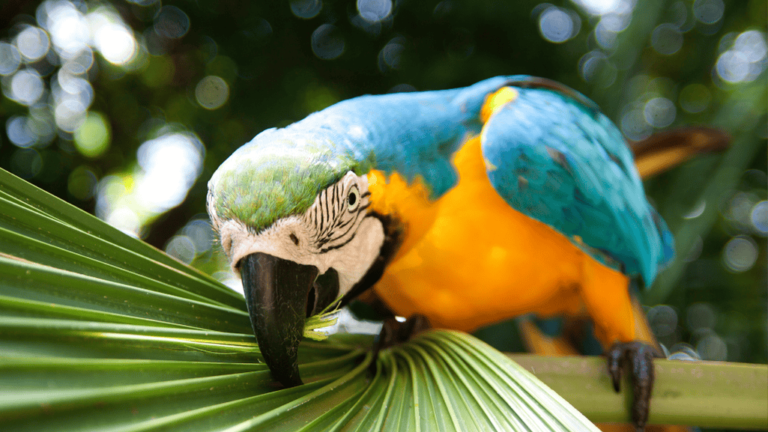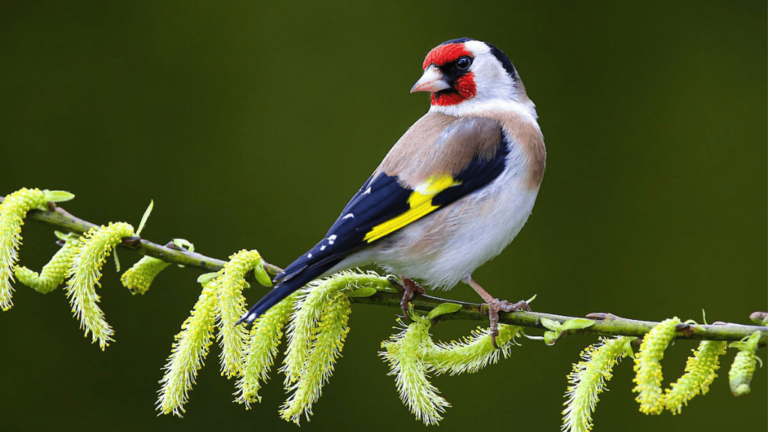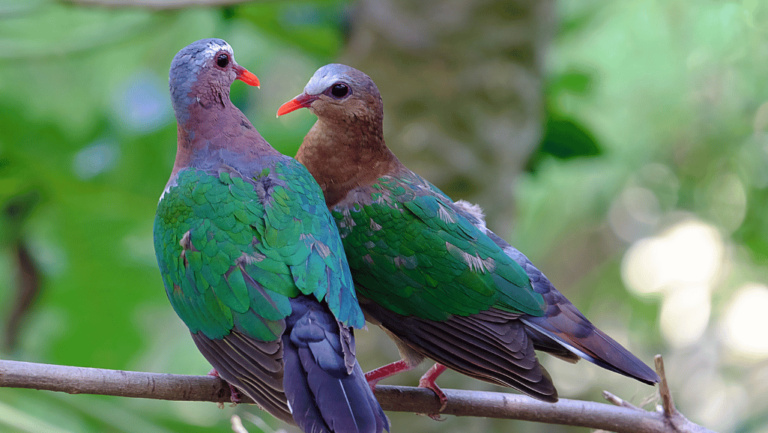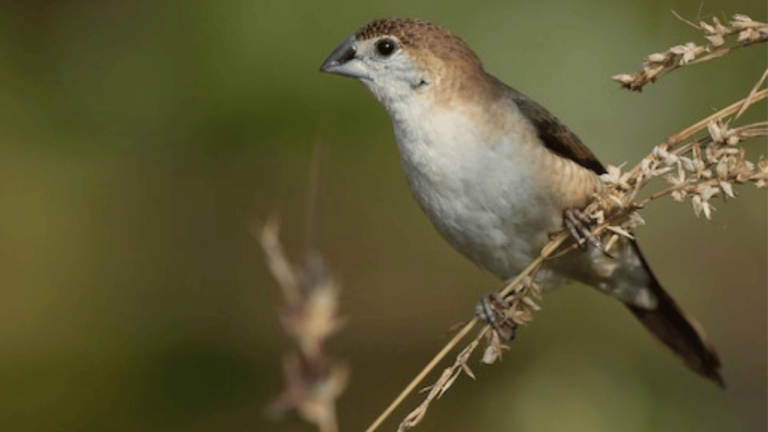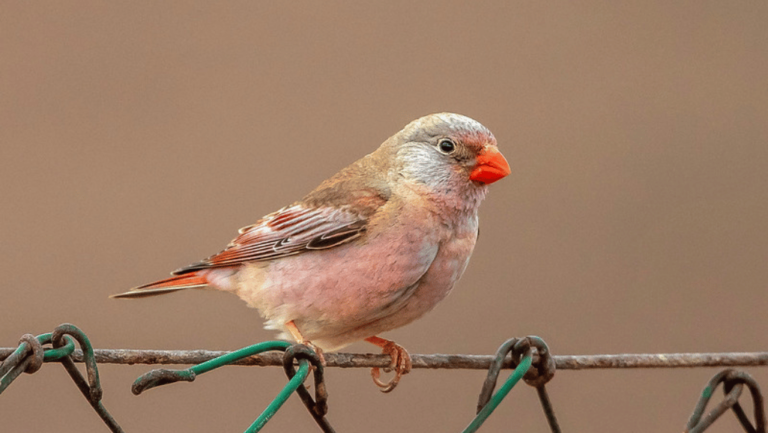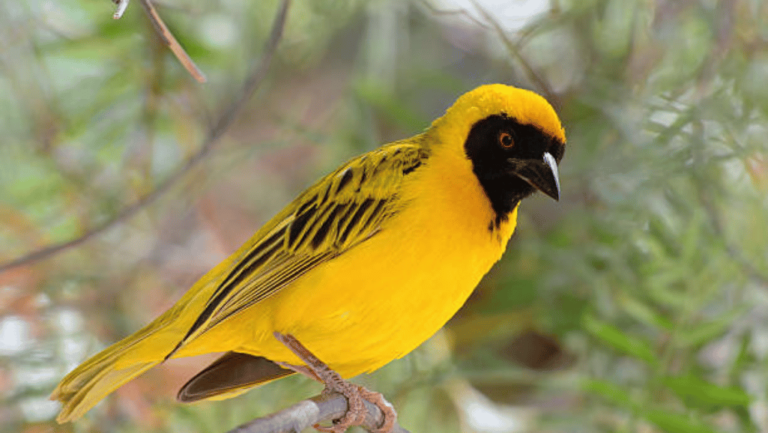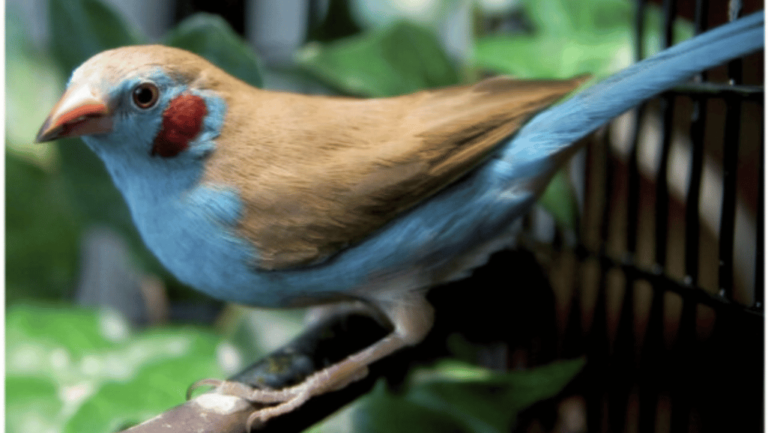The Gold Breast Waxbill Finch bird is a fascinating species known for its stunning appearance and unique seed-eating habits. In this article, we will delve into the enchanting world of Gold Breast Waxbill Finch birds, exploring their habitat, breeding habits, migration patterns, and conservation status.
Key Takeaways:
- The Gold Breast Waxbill Finch bird is renowned for its striking golden plumage on the breast and face.
- These finches are part of the Estrildid finch family and can be found in various regions of sub-Saharan Africa.
- They have specialized beaks adapted for cracking open and consuming seeds.
- Gold Breast Waxbill Finches form monogamous pairs and construct intricate nests using grasses, twigs, and feathers for breeding.
- Conservation efforts are crucial for protecting the habitats of these finches as they face habitat loss and degradation.
Avian Biodiversity: Finch Species Habitat
Gold Breast Waxbill Finches are part of the Estrildid finch family, which is known for their diverse species and wide range of habitats. These small seed-eating songbirds can be found in various regions, including grasslands, woodlands, and savannas, particularly in sub-Saharan Africa.
The Estrildid finch family is renowned for its avian biodiversity, with numerous species exhibiting different adaptations and behaviors. This diversity allows finches to thrive in various habitats and ecological niches.
In their natural habitat, Gold Breast Waxbill Finches prefer areas with an abundance of grasses, shrubs, and trees. They can be spotted in grasslands and meadows, where they feed on grass seeds and small grains. These birds also inhabit woodland areas, where they find shelter and nesting sites. Additionally, Gold Breast Waxbill Finches are known to frequent savannas, taking advantage of the resources found in these open grassy landscapes.
Key Habitat Features:
- Grasslands
- Woodlands
- Savannas
The availability of water sources is also important for Gold Breast Waxbill Finches, as they require regular access to fresh water for drinking and bathing. Therefore, they are commonly found near rivers, streams, and other bodies of water within their habitat.
Understanding the habitat preferences of Gold Breast Waxbill Finches is crucial for their conservation and management. By identifying and preserving the key features of their habitats, we can ensure the long-term survival of these beautiful avian species.
By exploring the avian biodiversity within the Estrildid finch family and understanding the habitats in which these birds thrive, we can gain a deeper appreciation for the intricate relationships between birds and their environment. The next section will delve into the fascinating behavior and feeding habits of seed-eating songbirds, such as Gold Breast Waxbill Finches.
Seed-Eating Songbirds: Finch Ornithology
Gold Breast Waxbill Finches belong to the passerine birds, commonly known as perching birds. These birds have specialized beaks that are perfectly adapted for cracking open and consuming seeds. Their diet mainly consists of grass seeds, small grains, and millets. This unique feeding behavior plays a crucial role in their survival and reproduction.
Their beak structure allows Gold Breast Waxbill Finches to efficiently extract and consume seeds. Their pointed beaks help them crack open the hard outer shells, while their slender tongues assist in maneuvering the seeds into their mouths. By feeding on a variety of seeds, these finches ensure a diverse and balanced diet.
Seed-eating songbirds like the Gold Breast Waxbill Finch play a vital role in maintaining the health of ecosystems. Through their feeding habits, they contribute to seed dispersal and help in the pollination process. By ingesting and subsequently regurgitating seeds, they aid in the dispersion of plants, promoting vegetation growth and maintaining biodiversity.
Their dependence on seed consumption also impacts other aspects of their life, such as reproduction. Adequate seed availability during the breeding season ensures the finches have the necessary nutrients for successful breeding and raising of their offspring. This intricate relationship between seed-eating songbirds and their diet underscores the importance of preserving their habitats and supporting their conservation efforts.
| Benefits of Seed-Eating Songbirds | Description |
|---|---|
| Seed Dispersal | By consuming seeds and subsequently depositing them in different areas, these birds aid in the dispersal of plant species and promote vegetation growth. |
| Pollination | As seed-eating songbirds move from flower to flower in search of food, they inadvertently assist in the pollination process, helping plants reproduce. |
| Ecosystem Balance | These birds contribute to the overall balance of ecosystems by controlling insect populations through their seed-eating habits, ensuring a healthy and sustainable environment. |
Seed-eating songbirds, such as Gold Breast Waxbill Finches, are a testament to the diverse and fascinating world of ornithology. Through the study of these birds’ feeding habits and their impact on ecosystems, researchers continue to uncover valuable insights into the intricate relationships that exist in the natural world.
Continue reading to explore the breeding habits of Gold Breast Waxbill Finches and their role as Estrildid finches in section 4.
Finch Breeding Habits: Estrildid Finches
Finch breeding habits play a crucial role in the life cycle of Gold Breast Waxbill Finches. Understanding their reproductive behavior provides valuable insights into the survival and conservation of these beautiful birds.
During the rainy season when food availability is abundant, Gold Breast Waxbill Finches engage in their breeding rituals. They form monogamous pairs, which means they mate with the same partner for an extended period.
To ensure a safe and nurturing environment for their offspring, the breeding pairs construct intricate nests using a combination of grasses, twigs, and feathers. These carefully crafted nests not only provide shelter but also offer protection from predators.
Once the nest is ready, the female Gold Breast Waxbill Finch lays a clutch of eggs, typically numbering between 4-6. Both parents take turns incubating the eggs, maintaining a warm and stable environment for their development.
After an incubation period of approximately 12-14 days, the eggs hatch, and the chicks emerge into the world. At this stage, the parents take on the responsibility of feeding their young ones. The diet consists of regurgitated seeds, which are rich in the nutrients required for the chicks’ growth and development.
Over time, as the chicks grow stronger and more independent, they gradually transition to feeding on solid seeds. This gradual shift in diet prepares them to fend for themselves in the wild.
The breeding habits of Gold Breast Waxbill Finches demonstrate the remarkable adaptability and dedication of these avian parents. By providing the necessary care and resources for their offspring, these finches contribute to the continuation of their species and the overall biodiversity of their habitats.
It is truly a fascinating spectacle to witness the entire breeding process of Gold Breast Waxbill Finches, from the construction of intricate nests to the nurturing of their young ones. This delicate dance of life underscores the importance of conservation efforts to protect the natural habitats and breeding grounds of estrildid finches.
The Finch Breeding Process: A Step-by-Step Guide
To better understand the intricacies of Finch breeding habits, let’s explore the step-by-step process:
- Pair Formation: Gold Breast Waxbill Finches form monogamous pairs during the breeding season.
- Nest Construction: The breeding pairs construct intricate nests using grasses, twigs, and feathers.
- Egg Laying: The female lays a clutch of 4-6 eggs in the nest.
- Incubation: Both parents take turns incubating the eggs to ensure proper development.
- Hatching: After an incubation period of 12-14 days, the eggs hatch, and the chicks emerge.
- Feeding: The parents feed the chicks a diet of regurgitated seeds to promote healthy growth.
- Independence: As the chicks mature, they transition to feeding on solid seeds and become more independent.
Birdwatching Finches: Passerine Birds in Focus
Gold Breast Waxbill Finches are a favorite among birdwatchers due to their vibrant plumage and active behavior. These charming passerine birds captivate enthusiasts with their small size and agile flight, making them a delight to observe in their natural habitat.
Whether you’re an experienced birdwatcher or a beginner, spotting Gold Breast Waxbill Finches can be an exciting and rewarding experience. These finches are known for their striking colors, with the males displaying a brilliant yellow plumage on their breast and face, while the females exhibit a lighter shade of yellow.
To catch a glimpse of these beautiful finches, birdwatchers often venture to prime locations where they can be found. Grasslands, meadows, and agricultural fields are popular habitats for Gold Breast Waxbill Finches, attracting birdwatchers eager to observe their graceful movements and observe their feeding habits.
Top Locations for Birdwatching Finches:
- Grasslands and savannas in sub-Saharan Africa
- Meadows and fields with ample seeding plants
- Agricultural areas growing grains and millets
When birdwatching, it’s crucial to remain patient and observant. Look for the characteristic flight patterns of these finches, which often involve quick bursts of movement followed by a graceful descent. Listen for their melodic chirps, which can help guide you to their location.
Remember to respect their natural habitats and keep a safe distance to avoid disturbing their behavior. With a keen eye and a sense of appreciation for these passerine wonders, birdwatching finches like the Gold Breast Waxbill will undoubtedly provide you with unforgettable and cherished moments in the avian world.
Finch Conservation Status: Protecting a Delicate Species
The conservation status of Gold Breast Waxbill Finches is a matter of great concern as their natural habitats continue to suffer from habitat loss and degradation. Human activities, such as deforestation and land development, pose significant threats to these delicate birds.
The ongoing destruction of their habitats puts the population of Gold Breast Waxbill Finches at risk of declining numbers. These small, vibrant finches rely on specific ecosystems for survival, making them vulnerable to changes in their environment.
To protect and conserve the habitats of Gold Breast Waxbill Finches, efforts are being made to raise awareness about their ecological importance. Conservation organizations, bird enthusiasts, and local communities are working together to implement measures that will safeguard their habitats and promote sustainable practices.
Raising awareness about the significance of Gold Breast Waxbill Finches in maintaining ecosystem balance is crucial for their long-term survival. By understanding the effects of human activities on their habitats, we can take proactive steps to mitigate these threats and ensure the conservation of these beautiful birds.
| Threats to Finch Conservation | Conservation Measures |
|---|---|
| Habitat loss due to deforestation | Implementing protected areas and promoting sustainable logging practices |
| Land development and urbanization | Establishing wildlife corridors and conserving green spaces in urban areas |
| Poaching and illegal trapping | Enforcing strict laws and regulations, along with increasing surveillance and penalties |
| Invasive species and habitat degradation | Implementing invasive species control measures and restoring degraded habitats |
| Climate change and habitat fragmentation | Adopting climate-resilient conservation strategies and creating habitat connectivity |
Finch Migration Patterns: A Journey Across Borders
Gold Breast Waxbill Finches are fascinating birds that exhibit interesting migration patterns. While they are primarily sedentary birds and do not migrate over long distances, they do engage in local movements in search of food and suitable breeding grounds. These local movements allow them to adapt to changing seasonal conditions and resource availability, ensuring their survival in different environments.
During certain times of the year, Gold Breast Waxbill Finches may embark on short-distance movements within their habitat. These movements are influenced by factors such as the availability of food sources, the presence of breeding opportunities, and the need to find suitable shelter. By exploring different areas, these finches can effectively utilize available resources and increase their chances of successful reproduction.
While their migration patterns may not be as extensive as those of other bird species, the local movements of Gold Breast Waxbill Finches play a crucial role in their survival and adaptability. By accessing a variety of habitats, these birds can access different food sources, escape unfavorable conditions, and increase their genetic diversity through potential interactions with individuals from other populations.
The ability of Gold Breast Waxbill Finches to navigate their surroundings and undertake localized movements highlights their remarkable adaptation to their environment. Their resilience in the face of changing conditions is a testament to their evolutionary success as seed-eating songbirds.
Key Points:
- Gold Breast Waxbill Finches are primarily sedentary birds with limited migration.
- They exhibit local movements in search of food and suitable breeding grounds.
- Migration patterns are influenced by seasonal changes and resource availability.
- Localized movements contribute to their survival and adaptability in different environments.
Avian Midas Touch: Exploring the Unique Plumage
One of the most distinctive features of Gold Breast Waxbill Finches is their golden plumage on the breast area, which gives them their name. The males have a bright yellow coloration on their breast and face, while the females display a lighter shade of yellow. This vibrant plumage is often considered a symbol of beauty and is a characteristic feature of this species.
The Golden Plumage of Gold Breast Waxbill Finches
The gold-colored plumage of Gold Breast Waxbill Finches is an exquisite sight to behold. The dazzling yellow feathers on the breast and face of the males make them stand out in any aviary or natural habitat. This unique coloring is the result of intricate genetic and evolutionary processes.
The distinct yellow coloration of the male Gold Breast Waxbill Finch is attributed to pigments called carotenoids. These pigments are acquired through their diet, primarily consisting of seeds and other plant matter. The ingestion of carotenoid-rich foods leads to the deposition of these pigments in the feathers, resulting in the vibrant golden hues.
The Role of Plumage in Courtship and Mating
The bright yellow plumage of male Gold Breast Waxbill Finches serves as an important visual cue during courtship and mating rituals. The males use their richly colored feathers to attract females and demonstrate their physical fitness. The brighter and more intense the yellow plumage, the more likely the male is to be chosen as a mate.
| Male Plumage | Female Plumage |
|---|---|
| Bright yellow on the breast and face | Lighter shade of yellow |
Interestingly, the female Gold Breast Waxbill Finches also display a lighter shade of yellow in their plumage. This subtle difference in coloration may help them blend into their surroundings, providing camouflage and protection during nesting and incubation periods.
The Significance of Plumage in Avian Communication
Plumage plays a crucial role in avian communication. The unique color patterns and arrangements of feathers enable birds to signal various messages to their conspecifics and other bird species. In the case of Gold Breast Waxbill Finches, the bright yellow plumage may convey dominance, attractiveness, and fitness to potential mates and rivals.
Furthermore, the vibrant plumage of Gold Breast Waxbill Finches also serves as a form of territorial display. Male finches defend their breeding territories by exhibiting their golden plumage and engaging in vocalizations and aggressive behaviors to deter intruders.
In conclusion, the golden plumage of Gold Breast Waxbill Finches is a significant aspect of their ornithological identity. The dazzling yellow feathers not only enhance their visual appeal but also play a vital role in courtship, mate selection, and territorial communication. The evolution and maintenance of such unique plumage highlight the intricate adaptations and fascinating behaviors of these remarkable finches.
The Role of Seed-Eating Songbirds in Ecosystems
Seed-eating songbirds, such as Gold Breast Waxbill Finches, play a vital role in ecosystems. These small and vibrant birds contribute to the balance and vibrancy of their habitats through their seed-eating habits. Let’s explore some key ways in which these feathered friends impact their environment:
Seed Dispersal and Pollination
As Gold Breast Waxbill Finches feed on a variety of seeds, they unintentionally become essential seed dispersers. When they consume seeds from various plants, they inadvertently transport the seeds to different locations as they move across their habitat. This dispersal helps plants expand their range, promoting plant diversity and contributing to the regeneration of ecosystems.
Additionally, some Gold Breast Waxbill Finches may also play a role in pollination. While not all species of Finches are known for pollinating plants, their visits to flowers in search of nectar or insects can result in accidental pollination, facilitating the reproduction of certain plant species.
Insect Population Control
By actively feeding on seeds, Gold Breast Waxbill Finches provide an important service to their ecosystem by helping control insect populations. Insects, particularly those that feed on plants or crops, can threaten the health and productivity of vegetation. The dietary preferences of seed-eating songbirds contribute to the natural regulation of insect populations, reducing the need for extensive pest control methods.
Prey for Larger Predators
Although Gold Breast Waxbill Finches may not be at the top of the food chain, their presence in ecosystems provides sustenance for larger predators. Birds of prey, such as hawks and falcons, prey on these small songbirds. These interactions form a crucial part of the intricate food web, supporting the survival and balance of multiple species within the ecosystem.
| Role | Impact |
|---|---|
| Seed Dispersal and Pollination | Expanding plant range, promoting biodiversity |
| Insect Population Control | Natural regulation of insect populations, reducing crop damage |
| Prey for Larger Predators | Supporting the food web and predator-prey dynamics |
Gold Breast Waxbill Finches, as seed-eating songbirds, are unsung heroes in maintaining the delicate balance of their ecosystems. Their feeding habits and interactions with other organisms contribute to the health and sustainability of the natural world around them.
Now that we understand the vital role these avian wonders play in their ecosystems, we can appreciate and protect their habitats to ensure their continued presence and the overall ecological well-being.
Exploring the Fascinating World of Finch Ornithology
The field of Finch ornithology delves deep into the study of finch species, unraveling their behavior, adaptations, and evolutionary history. This captivating branch of ornithology captivates researchers and bird enthusiasts alike as they unearth new insights into the remarkable world of finches. Among them, the Gold Breast Waxbill Finch shines brightly, attracting attention with its unique characteristics and vibrant presence.
Through meticulous scientific observation and rigorous research, we gain a profound understanding of these beautiful birds and their significant role in the avian kingdom. From their intricate breeding habits to their specialized diets, finch ornithology illuminates the fascinating intricacies of their lives. These studies provide valuable knowledge about finch species that contribute to their conservation, while also deepening our appreciation for the wonders of the natural world.
The Diversity of Finch Species
Finch ornithology showcases the remarkable diversity of finch species across the globe. From the majestic Gouldian Finch of Australia to the colorful Zebra Finch of Africa, each species displays a unique set of adaptations and characteristics. By examining their habitats, feeding behaviors, and social structures, researchers gain insights into the evolutionary processes that have shaped these avian marvels.
Behavioral Studies and Social Dynamics
Finch ornithology encompasses a wide range of behavioral studies, delving into the social dynamics of these delightful birds. Researchers uncover how finches communicate, form social bonds, and navigate complex social hierarchies. The unique courtship rituals, territorial behaviors, and parental care systems of finches offer a captivating window into their intricate social lives.
Adaptations for Survival
Finches have evolved an array of adaptations that enable their survival in various habitats and environmental conditions. Their specialized beaks, for instance, reflect adaptations to particular feeding niches, allowing them to exploit specific food sources efficiently. Finch ornithology unravels the evolutionary processes behind these adaptations, shedding light on the intricate relationships between form and function in avian anatomy.
Conservation and Restoration Efforts
Finch ornithology plays a vital role in conservation and habitat restoration efforts. By understanding the factors that affect finch populations, researchers can develop targeted conservation strategies to protect their habitats and ensure their long-term survival. The data and insights gleaned from finch ornithology contribute to global conservation initiatives aimed at preserving the rich biodiversity of our planet.
By delving into the captivating world of finch ornithology, we not only expand our knowledge of these enchanting birds but also uncover profound insights into the delicate balance of nature. Through continuous research and conservation efforts, we can protect finch species and preserve the intricate web of life they contribute to.
Conclusion
In conclusion, the Gold Breast Waxbill Finch is a fascinating and beautiful bird species that captivates with its golden plumage and charming behavior. Through this article, we have delved into various aspects of these finches, including their habitat, breeding habits, migration patterns, and conservation status.
By understanding the unique qualities of these avian wonders, we gain a deeper appreciation for the delicate balance of our natural world. The Gold Breast Waxbill Finch’s seed-eating habits contribute not only to its own survival but also to the dispersal of plant seeds, the maintenance of plant diversity, and the regulation of insect populations.
However, the conservation status of these magnificent finches is a cause for concern. Habitat loss and degradation pose significant threats to their population. It is imperative for us to prioritize the preservation and protection of their habitats to ensure their continued survival.
By fostering awareness, supporting conservation efforts, and taking steps to mitigate human activities that adversely affect their environment, we can play a crucial role in safeguarding the Gold Breast Waxbill Finch and preserving the intricate web of life in which it thrives.
FAQ
What makes the Gold Breast Waxbill Finch bird special?
The Gold Breast Waxbill Finch is known for its stunning appearance and unique seed-eating habits.
Where are Gold Breast Waxbill Finches typically found?
Gold Breast Waxbill Finches can be found in various regions, including grasslands, woodlands, and savannas, particularly in sub-Saharan Africa.
What do Gold Breast Waxbill Finches eat?
Gold Breast Waxbill Finches primarily consume grass seeds, small grains, and millets.
What are the breeding habits of Gold Breast Waxbill Finches?
Gold Breast Waxbill Finches form monogamous pairs, construct intricate nests, and lay a clutch of 4-6 eggs that are incubated by both parents.
Where can I spot Gold Breast Waxbill Finches for birdwatching?
Prime locations for spotting Gold Breast Waxbill Finches include grasslands, meadows, and agricultural fields.
What is the conservation status of Gold Breast Waxbill Finches?
Gold Breast Waxbill Finches face the risk of population decline due to habitat loss and degradation caused by human activities like deforestation. Conservation efforts are underway to protect their habitats.
Do Gold Breast Waxbill Finches migrate over long distances?
Gold Breast Waxbill Finches are primarily sedentary, but they may exhibit some local movements in search of food and suitable breeding grounds.
What is distinctive about the plumage of Gold Breast Waxbill Finches?
The males have a bright yellow coloration on their breast and face, while the females display a lighter shade of yellow.
What role do seed-eating songbirds like Gold Breast Waxbill Finches play in ecosystems?
Seed-eating songbirds contribute to seed dispersal, pollination, control of insect populations, and serve as prey for larger predators, helping maintain ecosystem balance.
What is the field of Finch ornithology focused on?
Finch ornithology is dedicated to the study of finch species, their behavior, adaptations, and evolutionary history.


